Every DM knows that there’s about a bajillion different kinds of maps all for different things. You’ve got your world maps, your towns, your dungeons, your player maps, your personal maps, overhead maps, your profile maps, your navigational maps, your abstract art that you call a map, and so on. Each of these has a different purpose and, barring using actual pencil and paper, you might want to consider a different set of tools for them too.
D&D map software has a long history, and as a result there’s a lot of it. Unfortunately, most of it costs an amount of money and time that could be better spent elsewhere. Fortunately, there’s a also quite that’s free, quite a lot that has uses outside of D&D, and quite a lot that is easy to use.
That’s what I’ll be talking about here. You’ve probably heard of expensive software like Campaign Cartographer that requires as much time to learn as Photoshop, or been turned off by account requirements on things like Inkarnate. None of that here.
So, without further ado, let’s jump in! These are some of the best free map making tools for D&D!
Hexographer
Hexographer is awesome, and old, and it did a lot right. You can create something that looks good enough in ten minutes, and you can create something that looks great in a few hours. It has a suite of symbology modeled off of Known World Dungeons and Dragons, plus some other stuff. This includes, but is not limited to: Catan, Space, and Modern Day!
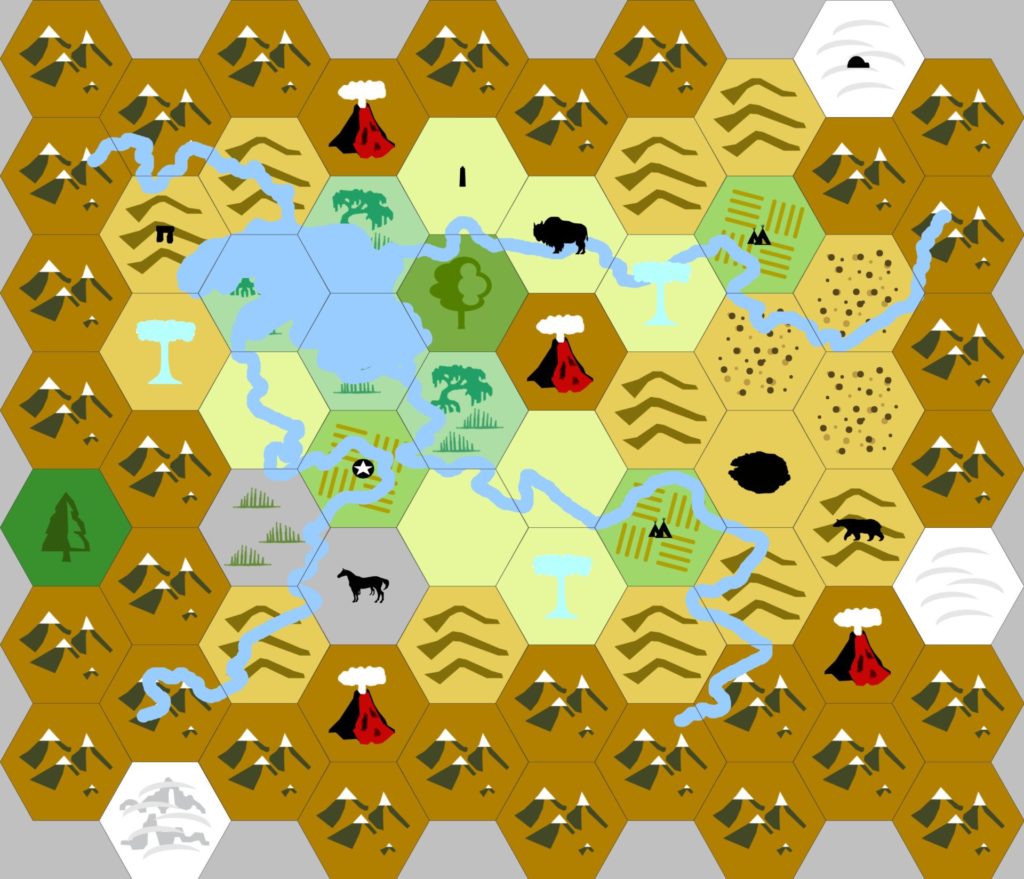
The downside is that all the symbols are modeled after Known World D&D. If you don’t want that, then be prepared to upgrade to Worldographer. Because its old there’s also a bunch of competitors that all do the same thing, but have more modern symbology set. While most of these require money or an account, they are out there.
HexTML
Speaking of, HexTML is one of those competitors. The big draw here, and why you’d choose this free map maker over Hexographer, is that it’s hosted online and allows for collaborative map making. If you don’t like downloading things, or want to draw out a world with a bud, then this is for you.
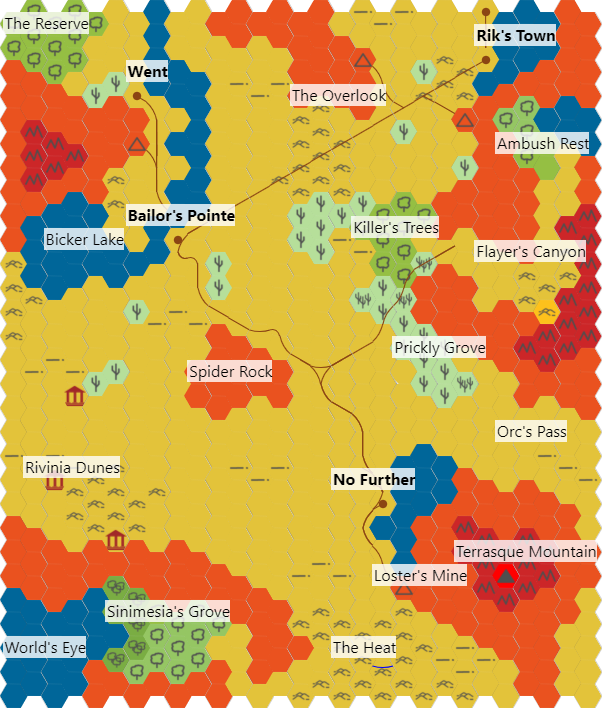
Unfortunately, the symbols look worse than they do in Hexographer, and your options are much more limited. Still, online functionality is nothing to scoff at.
Dwarf Fortress
Dwarf Fortress may be passed it’s day in the sun, but it is getting a Steam release soon and, for the beleaguered DM, it is a damn fine cartographer program. It generates an entire continent to your specifications, including hundreds of years of history. If you’re familiar with the game you might roll your eyes there, but don’t. World generation has gotten a lot quicker than I remembered, and it has all the same countries, individuals, and landscapes you can steal for your game. It is also modable, and with tools like Perfect WorldDF can import custom heightmaps and more!
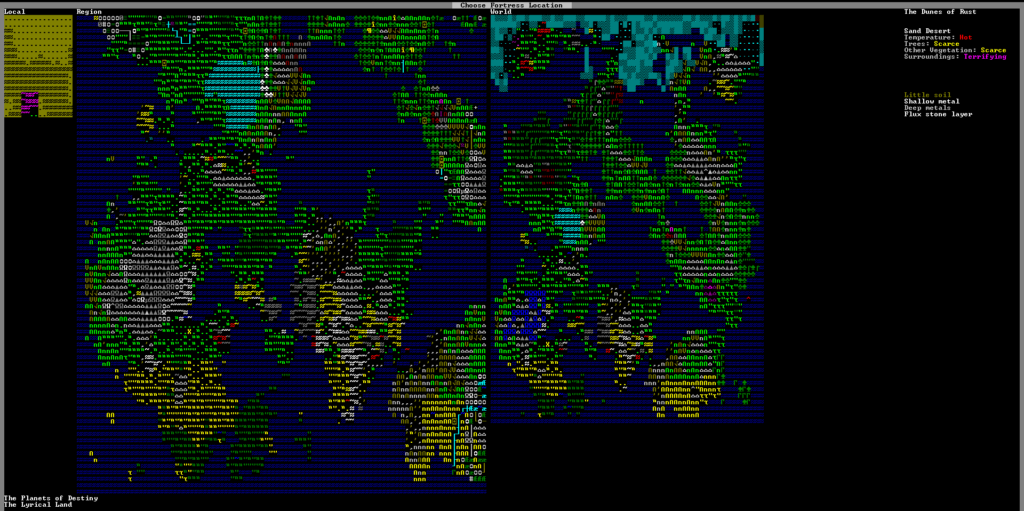
But the big con is obvious. Look at that image. If you’re aren’t familiar with roguelikes, you probably can’t read that. If you are, your players might not be. You can’t give that to them, and you’ll have to dip into something else to get something presentable.
Azgar’s Fantasy Map Generator
Azgar’s is very popular, and it does a lot of the same things Dwarf Fortress does as far as cartographer is concerned. It seeds cultures, cities, and so on, and does it quickly. It randomly generates names, and assigned them. You can input custom heightmaps without touching weird mods that haven’t been updated in years. It has an active community, and people regularly contribute to improving it. You could do worse, and its features will help you out if you’re starting from nothing.
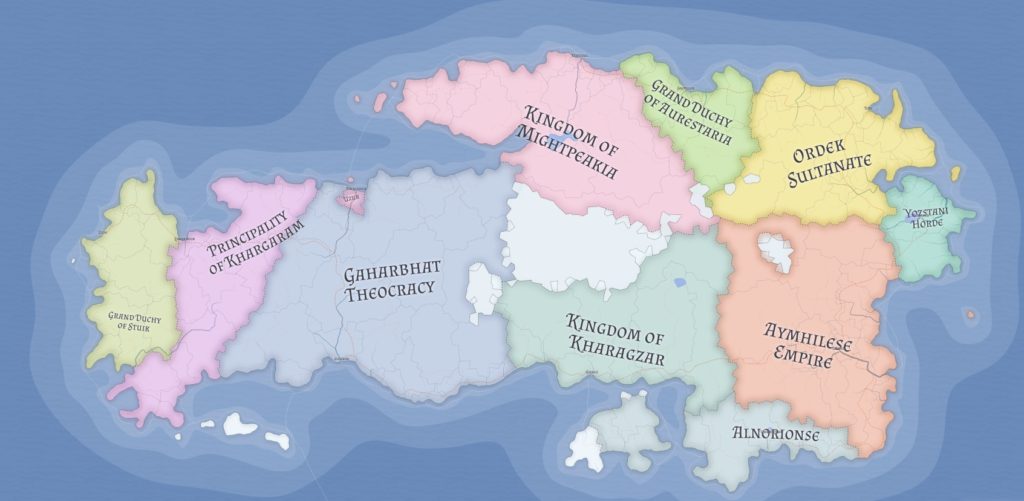
But the issue with Azgar’s is that all the shapes it produces are so, so ugly. And, unfortunately, this is baked into how it works and isn’t something that they’ll be able to fix. Importing a custom heightmap helps a bit, but since its method of generation will make that map worse it might not be worth it to you.
Inkscape
Now we’re in the general territory. Inkscape is a free vector image editor, not a weird game or program designed for map making. It is, however, awesome. Because it is based off of points and lines and not pixels the actual files sizes you’re dealing with will be really small.

But it is a graphic design program, and that means that it is easier to make things that look like modern graphic design than anything else in it.
Drawpile
Drawpile is like MS Paint crossed with Hextml’s collaborative features. Think Paint if it was Google Docs, and you’ve got the right idea. I used it to great effect for a COVID-era game of Dawn of Worlds and it worked great!
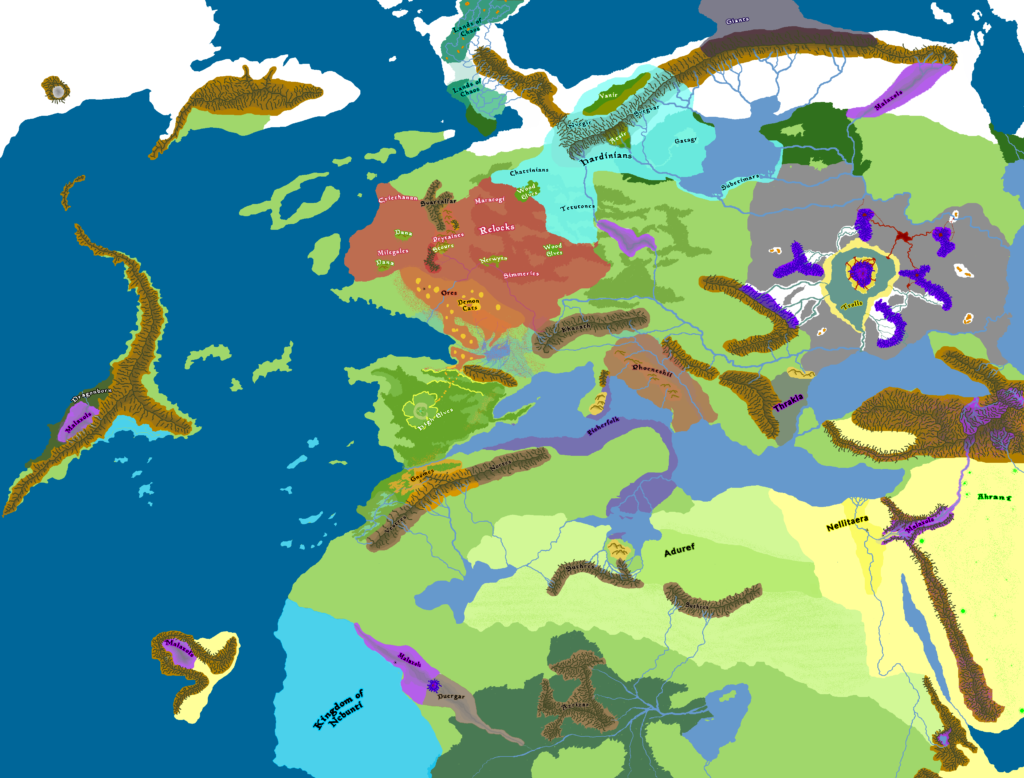
But it is MS Paint, and if you can imagine using MSPaint at the same time as five other people and that gives your Twitch Plays Pokemon flashbacks, then you’re on the right track.
L3DT
I’ve mentioned heightmaps a few times in this post, but I haven’t explained what they are. Heightmaps, also called normal maps in game design, are greyscale maps where each color value represents a different elevation. Black is typically the lowest, and white is typically the highest. L3DT helps you make these, and for this purpose it works great.
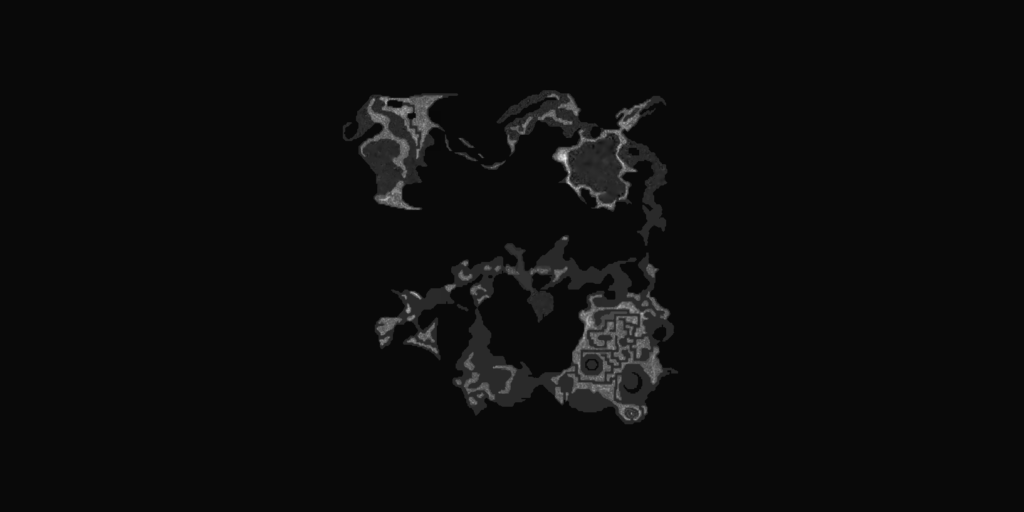
But it is more or less designed for Counter-Strike levels, and it will take some time to cludge it into a world or regional map program. Additionally, if you have no experience with these kinds of programs then there will be a learning curve. What trying to climb it resulted in for me is posted above.
G.Projector
This program does not make maps, but it does project them, which is just as cool. You can take any rectangular image, have the program read it as if it were most rectangular map projections, and turn it into nearly any map projection. This will allow you to get a good view of areas that are normally cut off by the edges of map, and get a whole new perspective on your world.
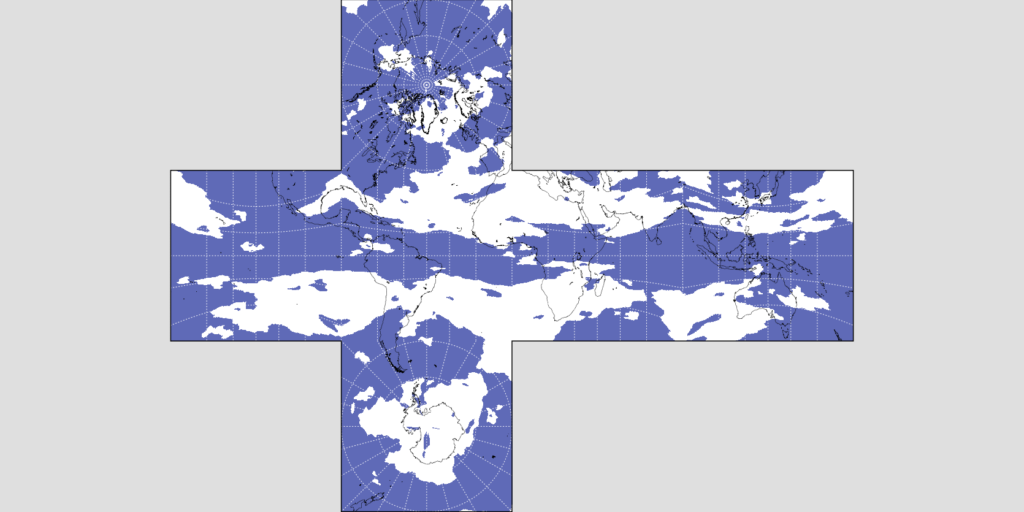
It will require you to think about map projections though, which you may not want to do.
QGIS
QGIS is the crazy person that became a professional, data-science cartographer of map making software. Essentially, it is Inkscape, but every point is linked to a specific point on the Earth’s surface. There is also an excel spreadsheet linked to each point, with any kind of field you can data field you can think on offer. You can then take these vectors and project them however you want, use them to make interactive web maps, and pop them into a globe on Google Earth.
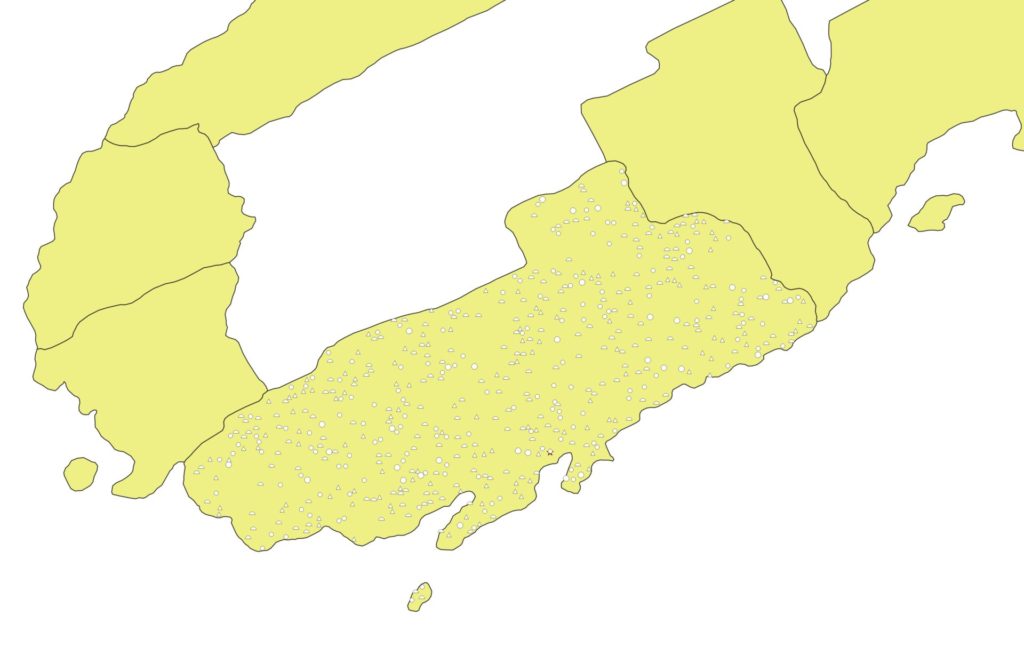
I think the downsides here are clear though: you could get a four year degree in Geographic Information Science, and a lot of it would be learning how to use programs like QGIS. So the learning cliff here might be too steep for everyday purposes.
GIMP
GIMP is the poor man’s Photoshop. Nearly anything there, you can do here. Consequently, it is one of the most powerful fee map making software available for D&D. The learning curve isn’t as bad as a LD3T, much less QGIS.

But if you do want to use Photoshop in the future, the UI between the two programs is totally different and there will be a period of adjustment.
So there you have it: ten of the best programs for D&D maps, all free, without needing to sign in, and multi-purpose. What do you think? Something we left out–or something we shouldn’t have included? Let us know down below, and also check out how Scooby-Doo can make your D&D game better, and some counterintuitive writing advice.